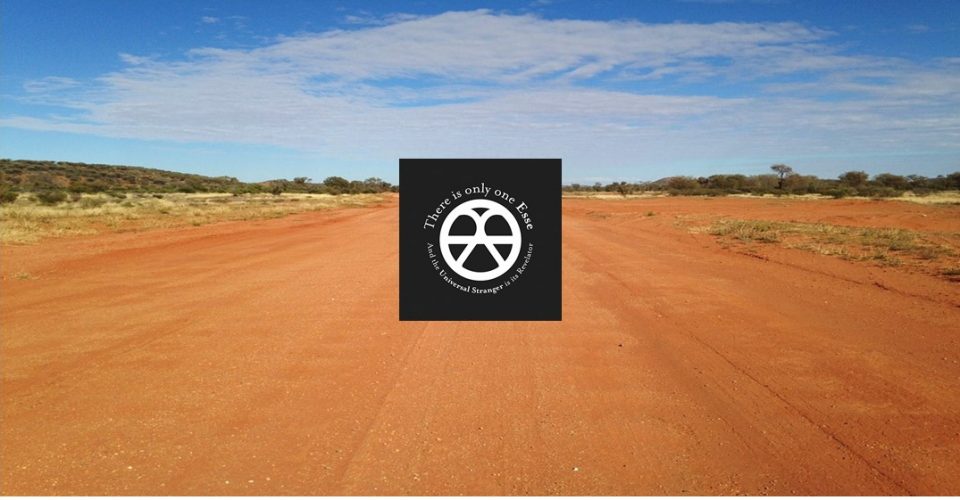This week (July 5-12) Australia celebrates its indigenous people, and does so against a background of continuing controversy over the constitutional status of Aborigines and Torres Strait Islanders. In recognition of the event and the complexities that continuously challenge our original inhabitants, I’m offering below an excerpt from my novel-in-progress, “Rody and The Stranger”, which touches (in an admittedly fleeting and indirect way) on some of these issues.
We were just about to turn up the hill that leads to the village when our next-door neighbour, Colin, wearing overalls and gloves, appeared from among the trees. Sophie beeped at him and waved. When he recognized us, he flagged us down; he seemed excited.
“Oh God, we’re going to be late,” murmured Sophie as she pulled over and lowered the window, leaving the engine running.
“Come and have a look at this,” said Colin.
“What is it?” I asked, but he had already turned and was walking briskly back to the bush, waving at us to follow him. “I’d better go see.”
“Christ,” said Sophie, slapping the top of the steering wheel with both hands.
“He might need help.”
“If you’re not back in two minutes I’m going without you.”
I jumped out of the car and followed Colin across the road.
“Can we come?” asked Rory.
“No!” roared the thundercloud.
A narrow, twisting and very uneven path led through eucalypts and she-oaks to a clearing where Colin and half a dozen others were standing in a semicircle around a large, flat expanse of rock surrounded by piles of freshly cut lantana.
“We just cleared this,” said Colin. “Look what we found.”
I made my way to the front of the group, nodding and smiling at Colin’s wife Brigette and others I knew, all volunteers on the community bush regeneration programme. It took me a moment to figure out what I was looking at and then a shape emerged.
Down the centre of the rock and taking up most of the space was a long, straggly outline of a man with a melon-shaped head that was far too large for his body. His eyes were like twin full moons and his lower half seemed to morph into a sort of tripod. The penny dropped and, not for the first time, I cursed the naivety that my sheltered Welsh Methodist upbringing had ingrained in me.
“Impressive middle wicket,” I said.
“The girls have told us to order more Viagra,” said Tony the plumber. Everyone laughed.
“Probably some kind of fertility symbol,” observed David, a schoolteacher.
“How old do you think it is?”
“Who knows?” said Colin. “Aborigines have been here more than 40,000 years.”
“Well, the other one can only be a couple of hundred years old at most,” said Brigette, pointing above and to the right of the figure’s head.
Again, it took me a moment to discern the shape. It was smaller and less impressive than the man-figure in terms of artistic conception, but it made my heart skip a beat: a three-master, complete with bowsprit and a few lines to suggest rigging, riding at anchor in the Sydney sandstone. To say I felt time stand still would be a cliché, but so what? It was as though someone had frozen a moment in history, thawed it and served it up to me on the spot: an Aborigine’s first encounter with European civilisation. For him (her?) the wooden floating object would have appeared strange, perhaps unearthly, while the medium in which he recorded it was natural and familiar; for me the object I was looking at was familiar from movies and illustrated history books, but I was seeing it in a new and alien way. I imagined the artist and me to be two observers at different points in time momentarily sharing a sense of being jarred out of our respective contexts.
And then there was the contrast between the subject matter of the two engravings, and the clash it could be said to represent between modern and ancient, dreamtime and real time, one culture and another. Oh, don’t get me started….
I was still thinking of the engraving of the ship. I fantasized that the original might have been the mother vessel of Captain Phillip’s expedition, witnessed by some Durag people from the banks of the Hawkesbury. I further fantasized that the process of engraving would have been a way for the artist to come to terms with this extraordinary encounter, by re-ordering his personal experience into something which, aesthetically at least, was definitive and, therefore, something he could own and control. I knew, of course, that I was imposing my own conceptions and assumptions—if not my own psychological needs—on experiences and processes that I could only imagine and not fully understand. No doubt the reality, as usual, was infinitely more prosaic and complex.
“Watch your speed, darling.”
“We’re late.”
“Let’s just make sure we get there in one piece, yeah?”
I remembered from my reading of local history how a party of Aborigines had attempted to board a settler’s boat on the Hawkesbury in 1873. The passage quoted a contemporary account from The Sydney Morning Herald which said the settler had aimed a pistol at the leader and “dispatched him to the shades”; the other raiders fell back, discouraged. It was only later that I learned the phrase was from Ovid. To the writer and his readers the allusion was probably no more than a stroke of rhetorical colour in a report that was fair and balanced, about an incident of which the rights and wrongs were clear-cut.
© Simon Jones 2015
It might be appropriate here to mention “Shadows in a Landscape”, Rody’s song about Albert Namatjira, which he wrote about on January 26, Australia Day (scroll down for article and link to song).
